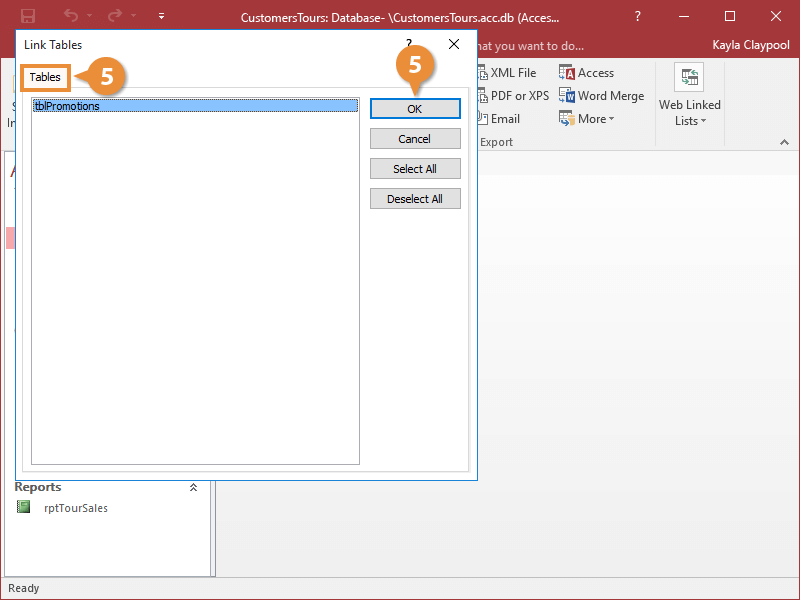
Access links the selected object to the current database.
You can link to more than one table at a time—simply select all the tables you want to select.
Many databases use a front-end database file, which contains forms, reports, and queries. Front-end database files are linked to a back-end database file, which contains the actual tables. Such designs work great when you want several users on several front-end databases to be able to access the same information in a single back-end database.